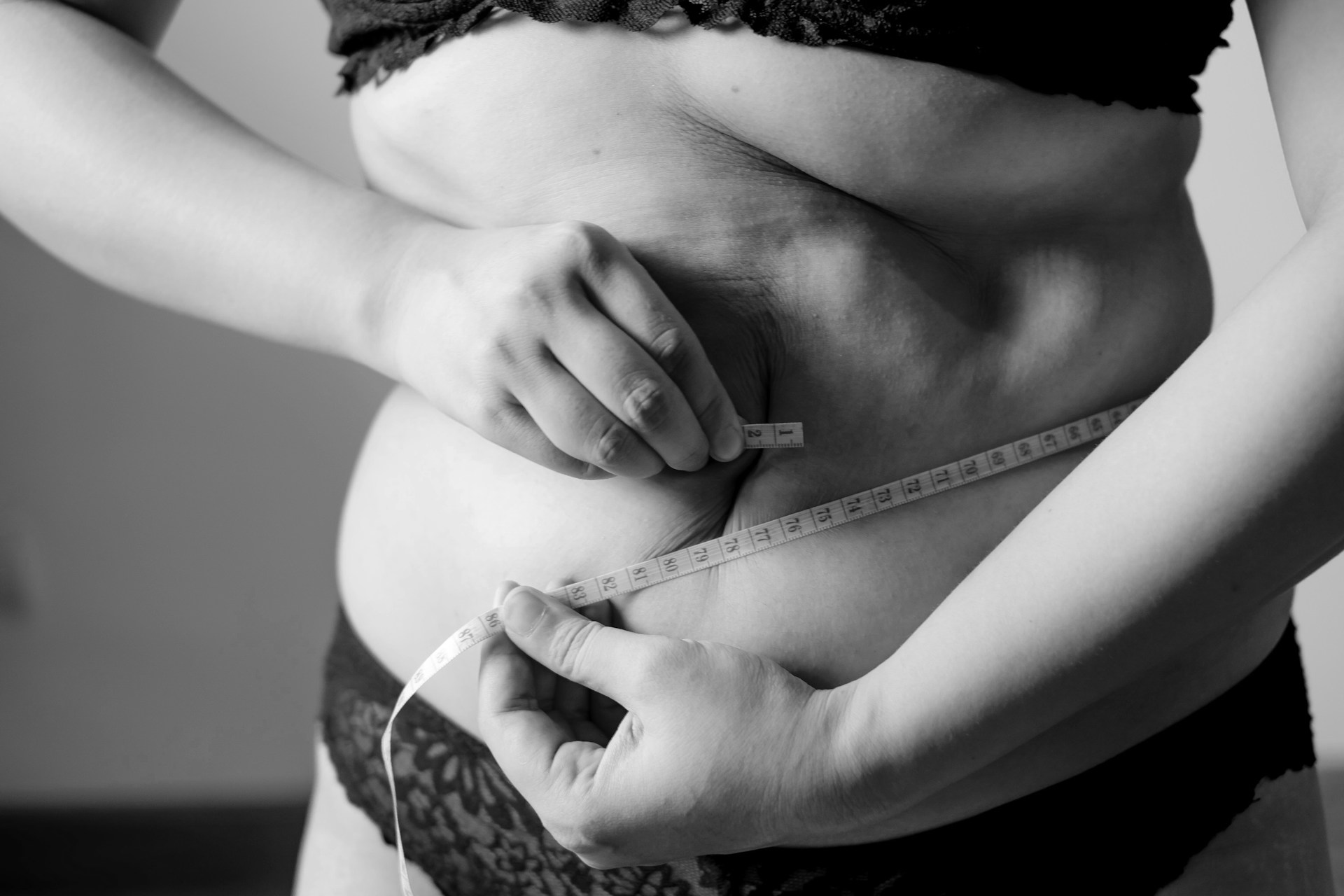Many individuals grapple with their weight and have unsuccessfully tried many different techniques and ways to get it under control. Many factors can influence a person's ability to lose a significant amount of weight and maintain that loss. Unfortunately, some of these patients will never be successful in losing weight without some type of medical intervention.
Bariatric surgery is one option that is available to effectively help a patient lose weight but it comes with some risks and the possibility of side effects. A significant number of people do not consider bariatric surgery a viable option for a few key reasons and the bariatric surgery recovery time is one of them.
If a patient does choose to undergo a surgical procedure, most consider laparoscopic gastric sleeve surgery or vertical sleeve gastrectomy (VSG) because it is one of the least invasive forms of bariatric surgery and has a proven track record. But it is still surgery and requires a fairly significant recovery time.
{{cta_button}}
Suture Sculpt ESG: Why It May Be Right For You
Have you ever wondered if there is a weight loss option that can produce similar results to VSG that does not require incisions, surgery, or a long recovery time? Yes! Suture Sculpt endoscopic sleeve gastroplasty (ESG) is a fairly new option that has shown such amazing results in clinical trials that the FDA recently approved the procedure.
Suture Sculpt is a comparable alternative for those patients who might consider gastric sleeve surgery or for patients who would not consider surgery at all.
To understand why Suture Sculpt ESG can help you lose weight just as effectively as gastric sleeve surgery, without the long recovery, we will look at a comparison of ESG vs gastric sleeve surgery.
When looking at a side-by-side comparison of gastric sleeve surgery vs ESG, it is clear why the recovery time for bariatric surgery takes so much longer than after an endoscopic sleeve gastroplasty.
ESG vs Bariatric Surgery Recovery Comparison Chart
<table class="iksweb"><tbody><tr><th class="blue-background">Gastric Sleeve (VSG)</th><th class="blue-background">Suture Sculpt Endoscopic Sleeve Gastroplasty (ESG)</th></tr><tr><th colspan="2">1. How is the procedure performed?</th></tr><tr><td>Several small abdominal incisions are made and the patient’s stomach is cut down to about 25% of its original size and removed using laparoscopic tools. The remainder is surgically stapled together to form a small stomach pouch/sleeve. The incisions are closed and finished using surgical tape.<p></p><p>Surgical Procedure</p></td><td>The patient’s stomach is made 75% smaller by reshaping it into a sleeve-like pouch and then suturing it into place. The entire procedure is done using an endoscope which allows small surgical tools to be lowered down the patient’s throat, to perform the non-surgical procedure.<p></p><p>Non-surgical Procedure</p></td></tr><tr><th colspan="2">2. Duration of hospital stay</th></tr><tr><td>1 -3 Nights</td><td>Done as an outpatient procedure so no hospital stay is required</td></tr><tr><th colspan="2">3. Who is a good candidate for gastric sleeve vs ESG?</th></tr><tr><td><ul><li>Individuals with a BMI of 35+ who suffer from at least one weight-related condition (i.e. Type 2 diabetes);</li><li>Individuals with a BMI of 40+;</li><li>Individuals who are healthy enough to undergo surgery.</li></ul></td><td><ul><li>Individuals with a BMI of 27+</li></ul></td></tr><tr><th colspan="2">4. Procedure length</th></tr><tr><td>About 2 hours</td><td>1-2 hours</td></tr><tr><th colspan="2">5. Stomach capacity and condition</th></tr><tr><td>Stomach capacity is reduced by approximately 75% and surgically altered permanently</td><td>Stomach capacity is reduced by approximately 70 -75% No part of the stomach is cut or removed. The procedure can be reversed or revised</td></tr><tr><th colspan="2">6. ESG vs bariatric surgery recovery timeline</th></tr><tr><td>2 -3 weeks for incisions to heal, 6-8 weeks for staple line to heal</td><td>Less than a week for the patient to feel back to normal</td></tr><tr><th colspan="2">7. Scarring</th></tr><tr><td>Small abdominal scars</td><td>No Scars</td></tr><tr><th colspan="2">8. Restrictions after the procedure</th></tr><tr><td>Patients must wait at least a month before beginning light exercise and at least six weeks before moderate exercise</td><td>There are no physical restrictions and patients can participate in whatever activities they feel comfortable doing</td></tr><tr><th colspan="2">9. Projected weight loss at 2 years</th></tr><tr><td>Approx. <a href="https://www.mayoclinic.org/tests-procedures/sleeve-gastrectomy/about/pac-20385183#:~:text=Results,excess%20weight%20within%20two%20years." target="_blank" rel="noopener">60% excess</a> weight at 2 years</td><td>Approximately <a href="https://www.ncbi.nlm.nih.gov/pmc/articles/PMC6556490/" target="_blank" rel="nofollow noopener">60-65%</a> of excess body weight at 2 years</td></tr><tr><th colspan="2">10. Historical procedure results</th></tr><tr><td>Verified longer-term <a href="https://pubmed.ncbi.nlm.nih.gov/29973112/#:~:text=A%20linear%20association%20between%20preoperative,(all%20p%20%3C%200.05)." target="_blank" rel="nofollow noopener">results of approx 61% EWL</a> at 5 years. Well-known long-term results and side effects</td><td>A newer procedure with <a href="https://www.ncbi.nlm.nih.gov/pmc/articles/PMC7939770/" target="_blank" rel="nofollow noopener">results of approx 59-61% EWL</a> at 5 years. long-term results not yet documented</td></tr><tr><th colspan="2">11. Risk profile</th></tr><tr><td><a href="https://www.ncbi.nlm.nih.gov/pmc/articles/PMC7939770/" target="_blank" rel="nofollow noopener">11.8%</a> for overall risks</td><td><a href="https://www.ncbi.nlm.nih.gov/pmc/articles/PMC7939770/" target="_blank" rel="nofollow noopener">2.9%</a> for overall risks</td></tr></tbody></table>
Surgical Procedure
The patient’s stomach is made 75% smaller by reshaping it into a sleeve-like pouch and then suturing it into place. The entire procedure is done using an endoscope which allows small surgical tools to be lowered down the patient’s throat, to perform the non-surgical procedure.
Non-surgical Procedure
2. Duration of hospital stay1 -3 NightsDone as an outpatient procedure so no hospital stay is required3. Who is a good candidate for gastric sleeve vs ESG?
- Individuals with a BMI of 35+ who suffer from at least one weight-related condition (i.e. Type 2 diabetes);
- Individuals with a BMI of 40+;
- Individuals who are healthy enough to undergo surgery.
- Individuals with a BMI of 27+
4. Procedure lengthAbout 2 hours1-2 hours5. Stomach capacity and conditionStomach capacity is reduced by approximately 75% and surgically altered permanentlyStomach capacity is reduced by approximately 70 -75% No part of the stomach is cut or removed. The procedure can be reversed or revised6. ESG vs bariatric surgery recovery timeline2 -3 weeks for incisions to heal, 6-8 weeks for staple line to healLess than a week for the patient to feel back to normal7. ScarringSmall abdominal scarsNo Scars8. Restrictions after the procedurePatients must wait at least a month before beginning light exercise and at least six weeks before moderate exerciseThere are no physical restrictions and patients can participate in whatever activities they feel comfortable doing9. Projected weight loss at 2 yearsApprox. 60% excess weight at 2 yearsApproximately 60-65% of excess body weight at 2 years10. Historical procedure resultsVerified longer-term results of approx 61% EWL at 5 years. Well-known long-term results and side effectsA newer procedure with results of approx 59-61% EWL at 5 years. long-term results not yet documented11. Risk profile11.8% for overall risks2.9% for overall risks
{{cta_small}}
Other Bariatric Surgery Recovery Times
Recovery time for bariatric surgery will vary by patient and other factors such as the type of technique used for the surgery, overall health of the patient, age of the patient, etc. Other popular bariatric surgeries and recovery times include:
- Gastric Lap Band Surgery 4-6 Weeks;
- Gastric Bypass Surgery 5-6 Weeks;
- Duodenal Switch Surgery 6-8 Weeks.
Suture Sculpt can help patients lose a significant amount of weight without the associated post-bariatric surgery restrictions. This means that patients can resume their normal activity and continue to exercise without any sedentary downtime.
If you have a BMI of 27+ and are interested in losing weight, contact Batash Medical Weight Loss Centers today to learn more about Suture Sculpt ESG and how it can help you. We invite you to learn about other non-surgical weight loss options we offer as well. Set up a consultation with one of our knowledgeable professionals to find out how we can help you reach your weight loss goals.
{{cta_button}}








